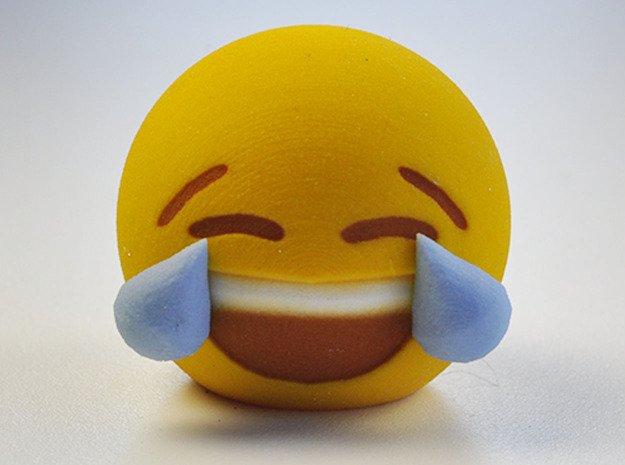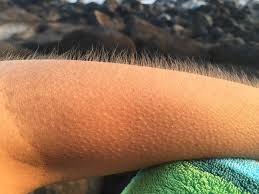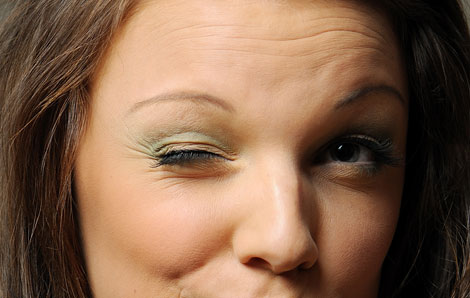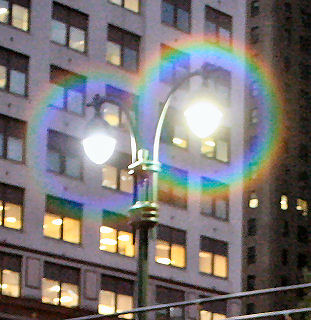People cry over pain, and laugh in joy right? So why do I cry when I laugh? Well, it turns out that it's not that simple. Although the phenomena isn’t fully understood, people sometimes laugh until they cry and/or can cry until they laugh. Laughing or crying at inappropriate moments, or out of context to the circumstances is something many people experience at least once, and there can be a variety of underlying reasons for these ill-timed outbursts.
Why do I Cry When I Laugh?

Experts really don’t know. However, there are some possibilities.
Laughing and Crying Is Similar
One thing to take into consideration is that crying and laughs are similar psychological reactions to high states of emotional arousal, they have lingering effects, and they don't necessarily come and go cleanly. People connect crying with sadness; however, crying is even a more complex human response. Tears are caused by a variety of reasons, such as sadness, pain, and in sometimes even extreme amusement. It's just the way humans have evolved.
Pathological Laughter and Crying (PLC)
Pathological laughter and crying (PLC) is a medical condition that is marked by apparently uncontrollable outbursts of crying, laughter, or both. The episodes are caused by an event that wouldn’t have led the person to cry or laugh prior to the onset of the condition, or does not have any apparent motivating factor. People that have PLC have damage in the motor areas of their cerebral cortex travelling all the way down the brain stem causing responses to be irrational.
Reflex Tears
Another explanation can be attributed to the brain sending signals to the tear ducts as a result from vigorous laughter. So why do I cry when I laugh, you ask? The tears produced are known as reflex tears, because they are the result of an external stimulus, much like the wind or an airborne irritant, and aren’t related to emotion. Does a tear of grief look any different from a tear of joy? Yes, emotional tears consist of a different chemical composition than reflex tears. The emotion driven tears contain more hormones, including a natural painkiller (leucine enkephalin).
What about Laughing When You Want to Cry?
Why do I cry when I laugh? Because crying and laughing provides the same kind of release for physiological stress, and it’s often a defence mechanism when people are feeling uncomfortable about a situation, or when they become overwhelmed. When people hold back their tears, it interferes with their body’s ability to relieve the buildup of anxiety, causing them to release the energy through laughter instead. When people laugh or cry, it is an involuntary subconscious attempt at calming down and reducing stress. However, nervous laughter is usually interpreted not to be genuine by others, and can unfortunately amplify the awkwardness of any situation. If someone is laughing during a tragic event, just remember that they probably cannot control it. They may be at a point where their body simply needs to release it.
Other Odd Body Reactions Explained
1. Why do Onions Make You Tear Up?
.jpg) The onion's chemical reaction is a natural defence mechanism used to repel pests, and when chopping an onion, you’ll rupture its cells that contain enzymes that produce a gas (propanethial sulfoxide), to be released. When the gas gets into your eyes, it reacts with the moisture in your eyes, triggering a mild reaction that stings. Your brain then sends signals to your eyes' tear glands to increase tear production to flush it away. The longer you cut, the more irritating gas is produced, and the more tears your eyes will produce.
The onion's chemical reaction is a natural defence mechanism used to repel pests, and when chopping an onion, you’ll rupture its cells that contain enzymes that produce a gas (propanethial sulfoxide), to be released. When the gas gets into your eyes, it reacts with the moisture in your eyes, triggering a mild reaction that stings. Your brain then sends signals to your eyes' tear glands to increase tear production to flush it away. The longer you cut, the more irritating gas is produced, and the more tears your eyes will produce.
2. What Causes Goose Bumps?
 Goose bumps (cutis anserina) are the result of a localized temporary change in the skin, such as cold, fear, or excitement, when it becomes rougher due to erection of little muscles. A tiny muscle at the base of hair follicles contracts, and raises the hair above the skin, and these are what we interpret as goose bumps. Some scientists think that goose bumps evolved around the “fight or flight” reaction similar to bristling in animals with fur. Although the phenomena may make animals appear larger and more frightening, goose bumps in people seem to have no practical purpose, except to make our skin crawl.
Goose bumps (cutis anserina) are the result of a localized temporary change in the skin, such as cold, fear, or excitement, when it becomes rougher due to erection of little muscles. A tiny muscle at the base of hair follicles contracts, and raises the hair above the skin, and these are what we interpret as goose bumps. Some scientists think that goose bumps evolved around the “fight or flight” reaction similar to bristling in animals with fur. Although the phenomena may make animals appear larger and more frightening, goose bumps in people seem to have no practical purpose, except to make our skin crawl.
3. What Makes Your Eyelid Twitch?
 Eyelid twitching (myokymia) is a fine continuous contraction of the eyelid muscle. It can involve either the upper or lower eyelid, but only one eye at a time. The eye twitching can range from barely noticeable to very annoying. The condition occurs spontaneously, sometimes triggered by fatigue, stress, alcohol, or caffeine. Fortunately, the twitching typically goes away within a short time, but may recur over a few hours, or a few days. In most cases, the condition is not harmful, and usually goes away by itself. To help end a case of eye twitches, get yourself a good night’s rest and reduce your intake of alcohol and coffee.
Eyelid twitching (myokymia) is a fine continuous contraction of the eyelid muscle. It can involve either the upper or lower eyelid, but only one eye at a time. The eye twitching can range from barely noticeable to very annoying. The condition occurs spontaneously, sometimes triggered by fatigue, stress, alcohol, or caffeine. Fortunately, the twitching typically goes away within a short time, but may recur over a few hours, or a few days. In most cases, the condition is not harmful, and usually goes away by itself. To help end a case of eye twitches, get yourself a good night’s rest and reduce your intake of alcohol and coffee.
4.  Why do You See Halos Around Lights?
Why do You See Halos Around Lights?
Halos are bright circles that appear to surround a source of light, and can be categorized as a spherical aberration. During daylight hours, the pupil contracts to a very small opening, and allows light to focus very near the center of your lens. However in darkness, when the pupil dilates allowing the maximum amount of light to enter, the eye is using a larger area of the lens to see. The more area of the lens you use, the optics becomes less perfect. Additionally, the light source won't be focused to the center of the lens, and because the lens is round, you see halos.
